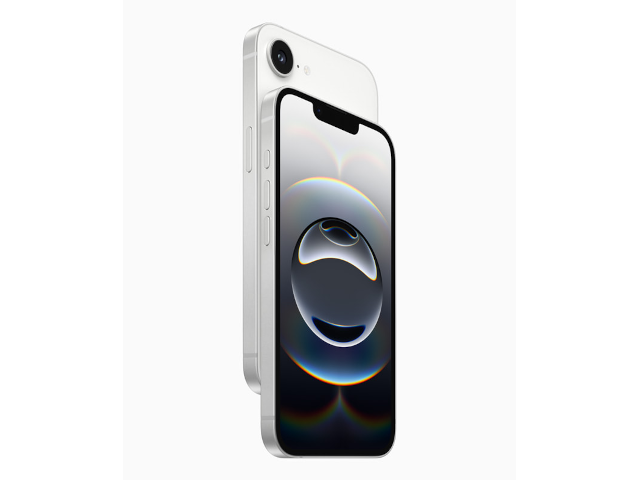
Apple has unveiled its latest release, the iPhone 16e, which was initially speculated to be the fourth-generation iPhone SE.
However, this new model brings much more to the table, explaining its higher price point of $599—$170 more than the previous iPhone SE. Unlike past SE models, the iPhone 16e features a completely new design, with a 6.1-inch screen identical to the iPhone 16, and Ceramic Shield protection on the front. It comes in black and white with a matte finish.
In line with the iPhone 16 family, the iPhone 16e includes the Action Button on the side, which can be configured to perform various functions, including Visual Intelligence. However, unlike other iPhone 16 models, it lacks the Camera Control.
Another notable change is its rear camera setup: the iPhone 16e has a single 48-megapixel camera, a significant improvement over previous SE models. This allows for a 2x optical zoom equivalent by cropping into the central 12 megapixels of the frame. The front camera is 12 megapixels, consistent with other iPhone 16 models.
The iPhone 16e is powered by the A18 processor and features Apple’s in-house modem, the C1. Storage options start at 128GB, with 256GB and 512GB versions available. Contrary to earlier rumors, it does not have the limited 64GB storage. Additionally, the phone boasts exceptional battery life, with up to 26 hours of video playback, surpassing the iPhone 16’s 22 hours of video playback.
Pre-sales for the iPhone 16e begin on February 21, with the official release on February 28. With its upgraded features and pricing, it marks a clear departure from the SE lineup, offering an impressive array of capabilities including Face ID, an OLED display, USB-C, and satellite connectivity, making it an enticing option for many Apple users.

























COMMENTS
Comments are moderated and generally will be posted if they are on-topic and not abusive.
For more information, please see our Comments FAQ